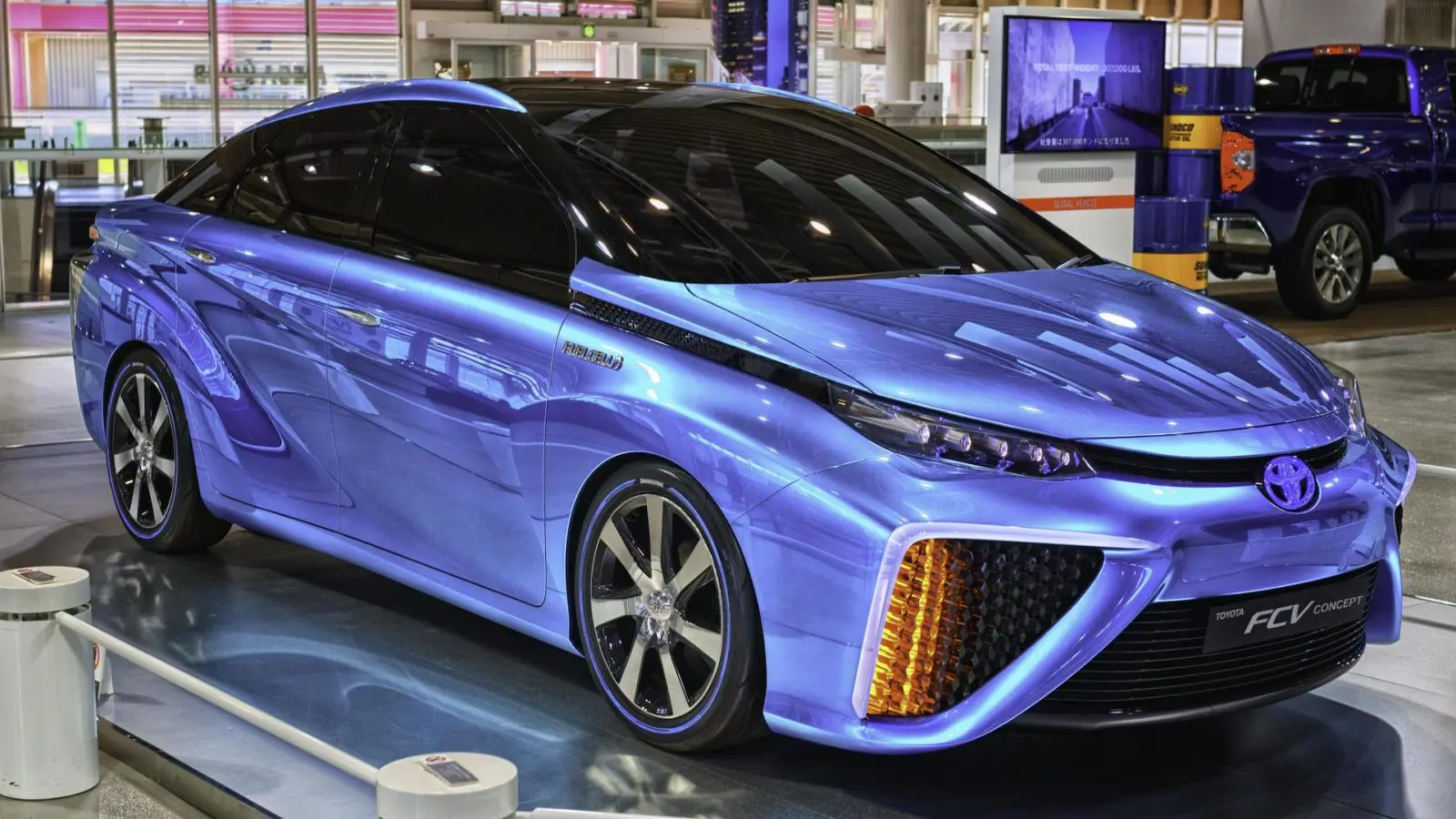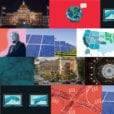Want to win your dream EV?
Climate XChange launched our 10th Annual EV Raffle, and the prizes are bigger than ever before. The Grand Prize is a fully-customized EV (or even two!) from any manufacturer, up to $120,000! Even better, we pay all of the taxes so you don’t have to.
We also have cash prizes for second and third place, so there are even more chances to win!
We’re only selling 5,000 tickets, so don’t wait and buy your ticket today!
As someone who was raised in Motor City (Detroit, MI), it’s a bit of an understatement to say that I “get” how significant cars are to our lives. Growing up, my school field trips were to the Ford River Rouge Plant, or the General Motors Manufacturing Plant, or Henry Ford’s Greenfield Village. My dad worked at Ford Motor Company, and the majority of my neighbors, friends, and classmates had at least one parent who also worked for one of the “Big 3” (Ford Motor Company, General Motors Company, and Chrysler).
The invention of the automobile changed the world forever, but this ground-breaking innovation came at a cost: our dependence on fossil fuels to power motor vehicles for years has resulted in billions of tons of carbon dioxide emissions. And year after year, research has shown that the number one source of greenhouse gas emissions in the United States comes from the transportation sector. So, if we want to mitigate the effects of climate change, one of our primary focuses should be figuring out ways to lower the emissions created from our methods of transportation.
The thing is, fossil fuel-powered trucks are the heart and soul of the American car industry. You know that iconic pick-up truck, the Ford F-150? That’s still the most popular selling car in the United States today. When I first heard the term “clean energy vehicles” come into the conversation, my first thought was, “will we actually be able to do that here?”
Clean Energy Vehicles
For context, clean energy vehicles are powered by resources that don’t combust fossil fuels when in use. When you drive a clean energy vehicle, it isn’t releasing planet-warming emissions. For example, a familiar clean energy vehicle we have come to know is the electric car, which has an electric motor powered by charged batteries instead of fuel. Instead of going into a gas station to fill up your tank, you either find a charging station or charge from home using your own power outlets.
While electric vehicles have long been the most popular and well-known among clean energy vehicles, they aren’t the only clean cars available. Another type of clean technology is hydrogen fuel cell vehicles, which also have electric motors but differ in that they are powered by hydrogen gas.
The methodology of fueling a hydrogen fuel cell car is almost identical to a typical gas-powered vehicle: you drive up to a station with a pump, you insert the pump into where the tank gasket is, and you wait for it to fill up. Using the hydrogen fuel in the tank, the vehicle’s motor will be powered from the chemical reaction between oxygen and the hydrogen gas. The only by-product released after the reaction is water vapor.
However, while hydrogen fuel is a promising power source for vehicles, especially long-haul trucks or ships which are more challenging to electrify, there’s still a long way to go before the industry is able to sustainably produce the fuel. Right now, most production of hydrogen is from natural gas or coal, making its creation extremely dirty. According to the International Energy Agency, hydrogen “production is responsible for annual CO2 emissions equivalent to those of Indonesia and the United Kingdom combined.” Until we change the processes from which we derive hydrogen fuel, it will continue to emit planet-warming emissions and further contribute to the climate crisis.
The Toyota Mirai
If you’re wondering who would actually drive a hydrogen fuel cell car, then I’m happy to reveal to you that yes, my most recent car was, in fact, a hydrogen fuel cell vehicle: the Toyota Mirai! Driving this car definitely piqued a lot of people’s curiosity, so I’ve answered some of the most common questions I’ve received about my experience with it:
1) What is the mileage like?
First, you need to know that hydrogen fuel isn’t measured by gallons – it’s measured by kilograms. A full tank for a Mirai is approximately five kilograms, and on a full tank, it gets about 66 MPGe (miles per gallon equivalent) of hydrogen gas.
2) How much does it cost to fill up?
Since the industry is in somewhat nascent phases and still developing how to efficiently transport and store hydrogen gas, the cost of the fuel isn’t cheap. It costs about $16 for one kilogram of hydrogen gas. However, Toyota gives all Mirai owners a hydrogen gas card that has $15,000 on it. That’s about three years of hydrogen gas covered by Toyota that you don’t have to pay for! And as more research and development comes into play, hydrogen gas will hopefully be made more affordable to drivers.
3) Where are there hydrogen fuel stations?
California and Hawaii are the only states that have active hydrogen stations, so for now you won’t be seeing these vehicles outside these two states. I reside in California, and there’s a total of 45 active hydrogen stations throughout the entire state, with more in the planning and development stages.
4) What are the fueling stations like?
For starters, hydrogen stations are typically found at gas stations, and almost all the gas stations I’ve been to only have one single hydrogen pump. This can cause some issues because if you’re in a rush, there might be a line of people ahead of you, which will force you to wait unless there’s another open pump close by. The fueling process itself doesn’t take longer than five to seven minutes.
Another caveat with relying on hydrogen fuel is that the pumps run out. For California, you have to check the state’s Fuel Cell Partnership website to see if pumps are “online.” Hydrogen tanks only have a certain number of kilograms stored in it all day, and if you show up to a tank without checking if it has fuel, you might find an empty pump. The website does a good job of telling you when the tank will be refueled, but again, if you’re in a time crunch, it can put a major delay on your plans. To be able to integrate hydrogen fuel cell vehicles as a viable clean energy option to drivers, hydrogen fuel infrastructure needs to keep up with consumer demand and the state’s carbon neutrality goals timeline.
5) How does the car do driving in the city versus driving long distance?
When driving locally or in the city, the car does an amazing job with efficiency. Similar to electric cars, hydrogen fuel cell vehicles use “regenerative braking” — an energy conservation mechanism that uses the friction created from stepping on the brake pedal to charge the battery of the car. Driving locally, I only needed to fill up my car once every two weeks (which I’m estimating was about every 250 miles). Conversely, these cars do not do well with long distance driving with minimal braking. Since the motor is electric, it acts similarly to a charged battery. Think about your phone: when you’re using it constantly without pause, the battery drains faster than if you were to use the phone in intervals with breaks. Without any source of recharging (braking, in this scenario) power gets used up at a quicker rate. For example, if I were to drive on the highway multiple times a week where I was going more than 30 miles at a time, I would have to fill up with gas once every week (around every 150 miles). The only way you can make your power last is if you drive efficiently, or drive no faster than 65 miles per hour. Going back to the phone comparison, think of it as driving in “low power mode” in order to make the battery last as long as possible.
6) Additional information you should know:
The main thing people need to know is that they really need to do the research and know what car they’re driving before they decide to buy it. You have to understand how to fill the car up and how to drive it so that it works most efficiently for you. For example, I didn’t do the proper research and thought I could drive from Southern California to Northern California the same way I would drive a gas powered vehicle, and I ended up running out of power and getting towed to the nearest hydrogen station due to driving inefficiently. I’ve also had instances where I’ve had to wait extra time at a hydrogen tank to refuel just because someone didn’t know how to insert the pump into the vehicle. Other times, people may not know that the pump needs five or so minutes to reset after being used so many times, so they will try to fill up when the tank is still in the reset process and end up leaving thinking it’s empty. Overall, there’s a lot to learn about hydrogen fuel cell vehicles and, along with research, the proper education needs to come into play when these vehicles are being sold to drivers.
Looking Forward
With a push forward by not only state governments but now also the federal government, clean energy vehicles are becoming a priority on the political agenda. However, the focus should not be exclusive to battery electric vehicles. Hydrogen fuel cell vehicles are an additional option that requires more research and development for certain transport uses. The journey to turn the transportation sector into a clean energy sector is by no means going to be an easy one, but setting ourselves up to be able to depend on various clean energy options – not just one – will give us a better chance to succeed in significantly reducing transportation’s planet-warming emissions.










